There is ample reason why people refer to a "gift that keeps on giving."
In the case of collectors of American coins, one such gift is the Bob R. Simpson Collection. Considered one of the finest troves of US coins ever assembled, Heritage auction sales of specimens from the Simpson collection exceed $116 million, heading into Part XII.
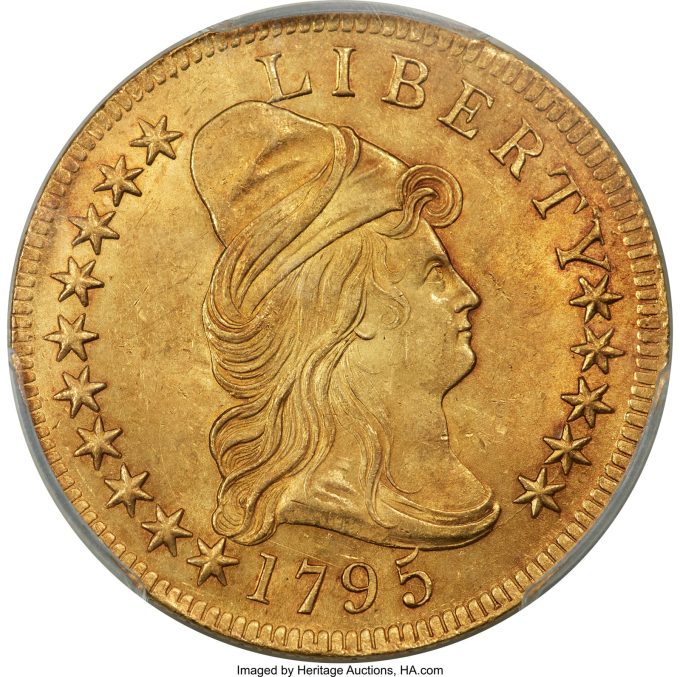
The next installment – Important Selections from The Bob R. Simpson Collection, Part XII – will be among the top attractions in Heritage’s May 8-12 CSNS US Coins Signature® Auction.
Simpson’s collection includes elite sets and individual coins, some of which will be offered in this auction.
"Mr. Simpson really found a great balance between rarity and quality," said Greg Rohan, President of Heritage Auctions. "Over the years, I’ve seen Mr. Simpson decline plenty of very, very rare coins, because they just lack special eye appeal, or particularly high quality. Conversely, I’ve seen him pass on many coins that were very high quality or exhibiting exceptional eye appeal, because they really weren’t inherently scarce… (He) practiced, really, connoisseurship, above any other collecting goals. By that I mean, most collectors work toward completion of a certain finite set… Mr. Simpson did complete some sets, but he never felt pressured or rushed to fill that hole that he needed."
The Coinage Act of April 1792, sometimes called the Mint Act, laid the groundwork for the establishment of the United States Mint and a national coinage system. Based on the earlier work of Alexander Hamilton, the Mint Act identified the officers, their salaries and their duties, the denominations of gold, silver, and copper coins, the standard purity of gold and silver coins, and established the dollar as the official money of account for the United States. America’s first gold coins, including a 1795 13 Leaves Eagle, BD-1, MS64+ PCGS that is one of the highlights from the Simpson collection, were produced during the administration of Mint Director Henry William DeSaussure. This example is an exquisite near-Gem example of BD-1, documented as the first die variety of the eagle denomination.
Reaching the collecting market in this auction is an 1863 Ten Dollar, PR64 Cameo PCGS, CAC, Judd-349 that is a magnificent example representing the pinnacle of rarity in American numismatics. Just one specimen of this important pattern issue is known to collectors and it claims an unbroken pedigree back to its day of striking. Only a few numismatic issues – Judd-349 among them – can claim to be unique.
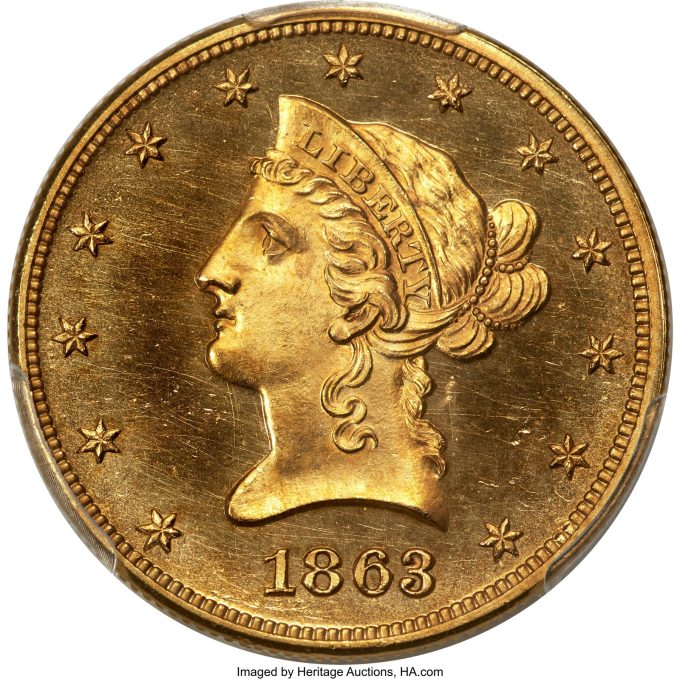
Also from Simpson’s collection is a spectacular Superb Gem 1913 Saint-Gaudens Double Eagle, PR67. Reports about the mintage of proof 1913 Saint-Gaudens double eagles can vary, depending on the source. The 2024 Guide Book lists the proof mintage as 58 pieces, while in his Saint-Gaudens Double Eagles as Illustrated by the Phillip H. Morse and Steven Duckor Collections, Roger W. Burdette notes that the "Deliveries 1911-1915" notebook/ledger at the Philadelphia Mint reported two deliveries totaling 88 pieces. Dannreuther reports a third delivery of 11 coins, bringing the total to 99 pieces.
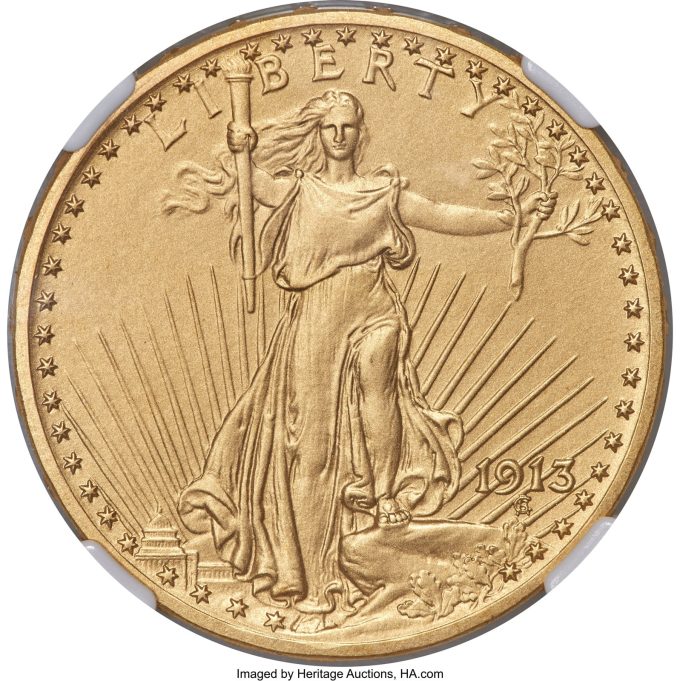
Curiously, records indicate only 58 examples were actually distributed. Whichever total is correct, the expert’s estimates of the surviving population for the issue are in close agreement. PCGS CoinFacts estimates 40-45 examples survive today in all grades, while Burdette suggests 40 pieces are extant and Dannreuther believes 35-45 specimens still exist.
Unseen at auction for more than 80 years but available in this auction is an 1839 Gobrecht Dollar in Copper PR64 Red and Brown PCGS. This is the unique copper variant of the extremely rare (three known) Judd-108 restrikes in silver. An August 1941 auction catalog described it as "The only one known to exist. … Excessively rare and unique." Following that auction, it turned up in Abe Kosoff’s fixed price lists in the 1960s, but then fell into obscurity for decades.
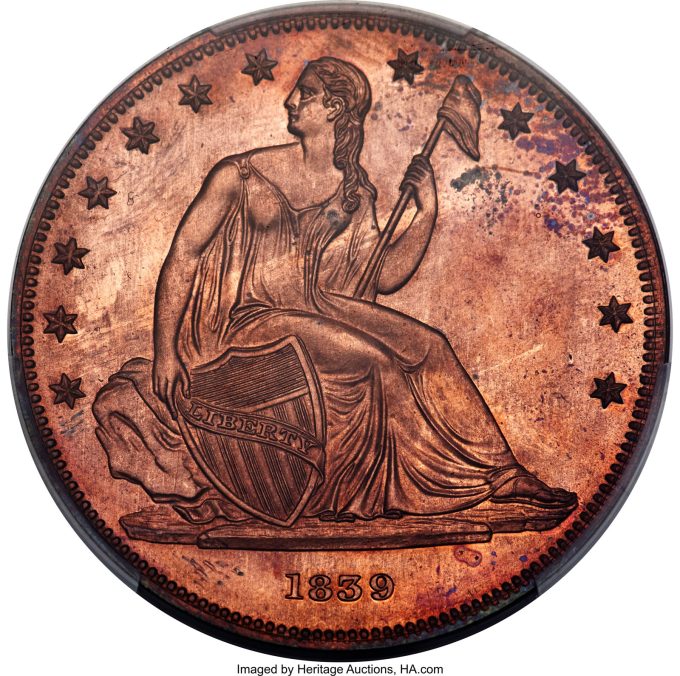
Another standout from the Simpson collection is a 1797 BD-1 Eagle, MS61 PCGS, which is tied for the fifth-finest known example. The 1797 Small Eagle BD-1 eagles often are celebrated as major rarities, which supports Dannreuther’s estimate of just 55-65 known examples. This example is tied for the second-best PCGS-certified coin behind an MS62 example that was sold at Heritage Auctions in August 2023.
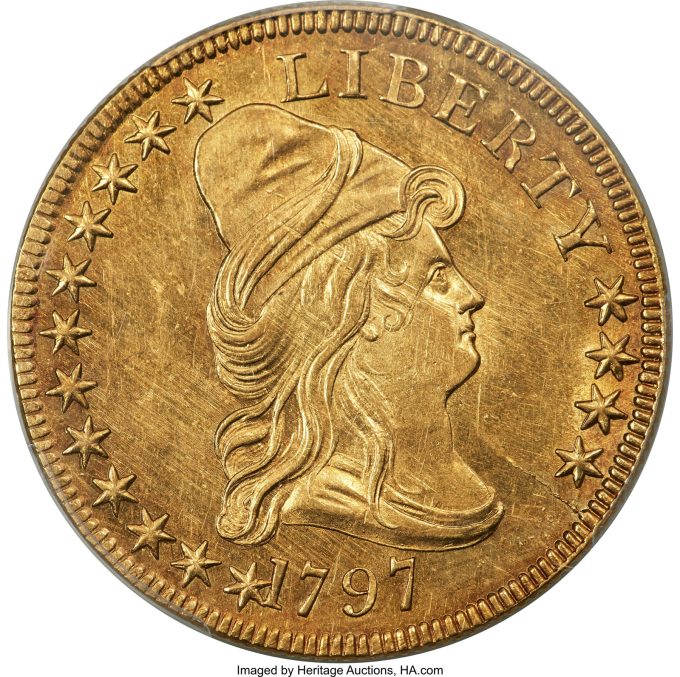
Beyond the Simpson collection, the auction is teeming with exceptional numismatic treasures, including a 1776 Continental Dollar, MS61 NGC. The Newman 1-C Continental dollar has long captured the interest of early American specialists and Colonial coins collectors, in part because of the misspelled "CURENCY" on the obverse.
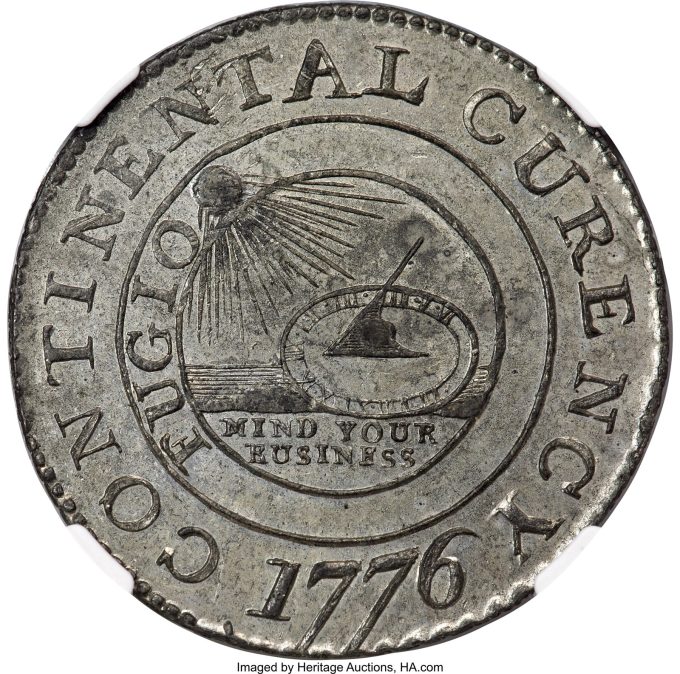
It ranks alongside two other pewter varieties, Newman 2-C and Newman 3-D, in availability and popularity. These varieties are more accessible than other variants of the issue, including four other Newman-variety Continental dollars considered formidable rarities, particularly those struck in silver or brass. Although no monetary denomination appears, American collectors are often captivated by this issue, in part because of the 1776 date that was so significant in the nation’s history … despite the fact that the debate over whether these coins were minted in Europe or America remains unresolved.
An 1861 Original Confederate Cent, PR63 PCGS is among the most sought-after issues in American numismatics. Many questions remain about Confederate cents, but what is known includes the fact that the total struck in early 1861 was estimated at just 16. The engraver, Robert Lovett, Jr., struck the coins clandestinely, but accidentally spent one in a Philadelphia tavern, leading to the discovery of the issue.
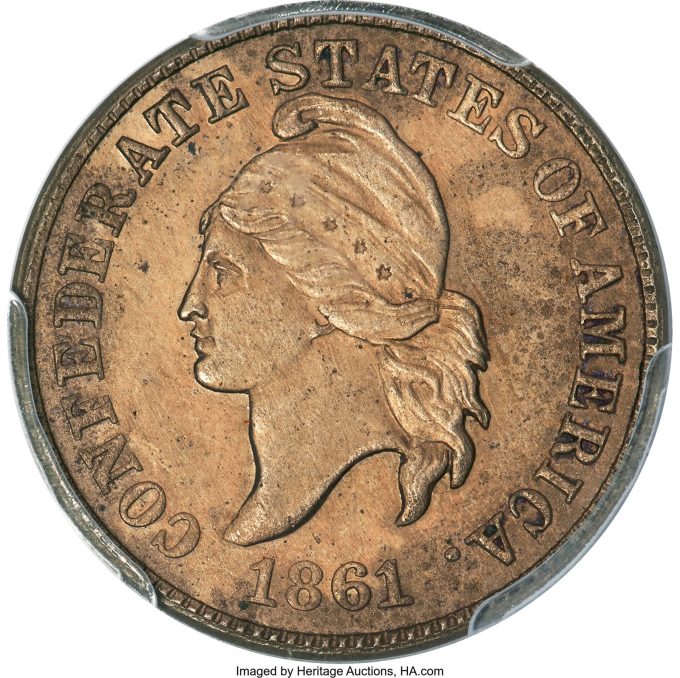
As hostility grew, Lovett grew anxious about producing coins for the Confederacy; his concern was validated when President Abraham Lincoln signed legislation in July 1861 that made it illegal for Northern businessmen to engage in commerce with the Confederacy.
An 1879 Flowing Hair Stella, Judd-1635, PR66 Cameo CACG, is a stunning example of one of the most popular issues in American numismatics. Although technically a pattern, the 1879 Stella, which was named one of the 100 Greatest U.S. Coins, typically is collected as a trophy coin and type issue. The surviving population is in the hundreds, but there never are enough high-quality examples to meet the unending demand.
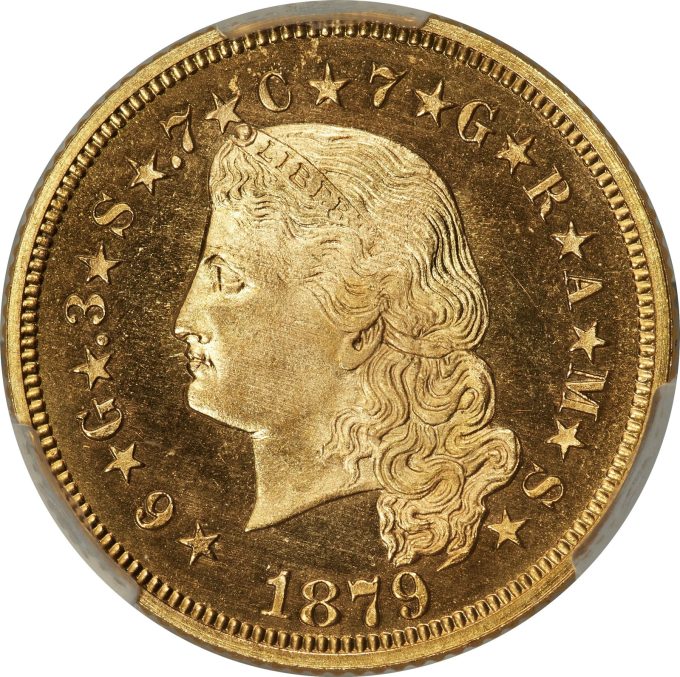
An 1833 Capped Head Left Half Eagle, MS65+ PCGS tops the Condition Census for the variety. The 1833 Capped Head Left half eagle is a landmark rarity in the series, and examples always are in demand. In addition to its popularity with series specialists, the 1833 half eagle represents the short-lived Reduced Diameter design type, making it a favorite selection of type collectors. This magnificent Plus-graded Gem is the finest-certified Mint State 1833 half eagle of any variety.
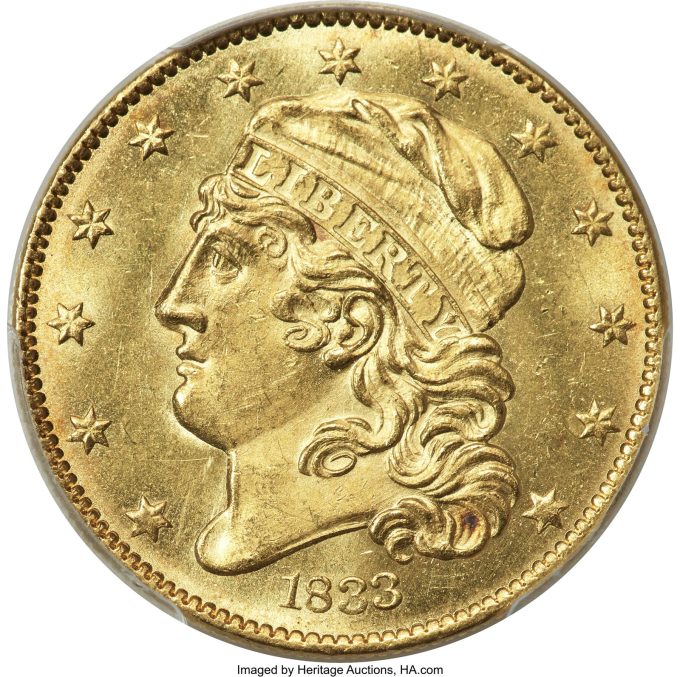
Images and information about all lots in the auction can be found at HA.com/1374.
About Heritage Auctions
Heritage Auctions is the largest fine art and collectibles auction house founded in the United States, and the world’s largest collectibles auctioneer. Heritage maintains offices in New York, Dallas, Beverly Hills, Chicago, Palm Beach, London, Paris, Geneva, Amsterdam, Brussels and Hong Kong.
Heritage also enjoys the highest Online traffic and dollar volume of any auction house on earth (source: SimilarWeb and Hiscox Report). The Internet’s most popular auction-house website, HA.com, has more than 1,750,000 registered bidder-members and searchable free archives of more than 6,000,000 past auction records with prices realized, descriptions and enlargeable photos. Reproduction rights routinely granted to media for photo credit.






Wow, talk about eye appeal! Each of the above pictured coins is truly an awesome sight to behold! Owning anyone of them, let alone all of them at once, would be awesome, in and of itself IMO.
That confederate cent has me intrigued. I’m tempted to throw down a bid but I suspect the coin could fetch a cool half mil. Tempting but ultimately it would cost twice the value of my current collection. Must … resist … temptation.
That’s what HELOCs are for, right? LOL way out of my ballpark!
Do any of these auctions have rare but not super-rare coins? I’d love to pick up 1838 & 1861 Dahlonega & Charlotte Half-Eagles. My potential source, who wrote a book on the Dahlonega Mint, has disappeared. Can anyone recommend a reputable dealer?
A quick thought–email Stack’s Bowers Galleries. They enjoy the scarce/rare coin market–and can get you what you want.
Thanks for the lead.
E1 said re: striations on 2014 S Enhanced Unc, Kennedy obverse, in a previous thread: “Most if not all of the DMPLs have that 45° Degree striation pattern across the device.” “Not to sure what the cause is. It is unique and extremely uniform. I’ve thought about that before too.” Thanks for your responses E1 and Rick. I believe I’ve come up with an(the?) answer to the striations on the 2014 S Enhanced Uncirculated Kennedy half dollars? The striations were created by “wire wheel”, prior to the heavy laser frosting being applied, during the die prep work, unintentionally IMO. Maybe… Read more »
Cali, Since the TPGs have looked at more of these than anyone else, they may be in a better position to make a call on this issue. Due to the precision spacing of the striations, it could be the result of LASER texturing via precision motion control. I would be quick to rule out that it was done by hand. The die may have been textured by LASER and then flat lapped to polish the fields. The degree of lapping or die wear could explain the varying smoothness and reflectivity of the fields. One thing is obvious, there is a… Read more »
There is a distinct precision linearity to the striations. Definitely not a brush or done by hand.
Cali,
I don’t know if this is worth investigating, but here are some more photos.
Maybe, a LASER simulated brush effect? Anybody from the Mint care to chime in here? PCGS, NGC?
Cali,
Last one…
Looks like it needs a second, third–and so on ‘coat’ of the Enhanced Finish to complete the ‘paint job’ lol.
You can see that the striations are underneath the finish.
Thanks for the close-ups.
From CW article June 13, 2014
“For the Enhanced Uncirculated 2014-S Kennedy, 50th Anniversary silver half dollar, the fields on both obverse and reverse dies will be wire brushed.”
“Different elements on the artwork lettering on each side will be laser frosted with different intensities.”
On the DPLs, maybe the die fields never got wire brushed.
Purposeful brush effect? That actually makes some sense with this one.
Hmmm…. Only about a 6,000 RPM or so? The lines will blend and appear to be uniform or line up, if you will. Check out this pic and article of a wire wheel in use at the mint for use on dies. From this past Coin News article on production. I feel like we are about to go down an “8 micron” hole”? LOL “How the Philadelphia Mint Makes Hubs and Dies to Produce Coins”
https://www.coinnews.net/2013/09/13/how-the-philadelphia-mint-makes-hubs-and-dies-to-produce-coins/
Cali, In closing, I myself have concluded that the 45° striations on the device were intended by design and LASER generated at varying intensities. The fields of the coin were intended by design to be wire brushed. Some of these strikes were not wire brushed – hence DPLs. Most likely, the earliest strikes may have been first article production pieces used to adjust the process as needed to attain the desired brushed finish density. Also, I have never been to the Granite Lady in San Francisco. That is a bucket list item for me. I’ve been to the Philadelphia Mint… Read more »
Without looking things up on Enhanced finishes and their processes. My uneducated guess is that these were an early, if not the earliest Enhanced finish attempted on a Numismatic coin other than the 2013-W ASE?–Just a guess–The Detectives will straighten me out on this one I predict…The $.25 5 oz ‘SP Vapor Blasted’ puck finish might have done well on these Kennedy coin devices?
Those coins up top are stunning scarcity/rarities!
That 1776 Continental Dollar looks like one of those Fuigo Cents. “Mind Your Business.” Love that date too “1776.” Benjiman Franklin DNA?
HA is a good place drain a bank account.
After watching a few videos, this could simply be the leftover affect from the “heavy laser frosting”? With the CNC robotic back and forth, these may just be deep groves(heavy) done during the laser etching process? Man, how cool would it be E1, to be able to hang out in production for a week and be able to ask questions and present “what if issues” to the many skilled fabricators and operators at the Mint? Don’t you think? Again, all facets of the coining process are interesting to me from concept to production and delivery AND anything in between. Thanks… Read more »
Definitely from the laser frosting application. Multiple articles in Coin News on the topic. “White represents the use of laser polishing
The distinctive treatments look spectacular when using a loupe to view the coins. To the naked eye, however, the presentation is more subtle. Keep that in mind.” By our own Mike Unser! “2014-S Enhanced Uncirculated Kennedy Half-Dollar Laser Treatments”
https://www.coinnews.net/2014/10/24/2014-s-enhanced-uncirculated-kennedy-half-dollar-laser-treatments/
PS I’ve got zero doubts that the “Heavy Laser Frosting”(polishing) is our culprit.
E1 says…” Due to the precision spacing of the striations, it could be the result of LASER texturing via precision motion control.”… Cali says…” With the CNC robotic back and forth, these may just be deep groves(heavy) done during the laser etching process?”… You both ended up saying the same thing more or less. One said it early, and one said it later(and both in agreement in general). Thank goodness. The other comments in between the two comments above– I’m going to respectfully discard and shove them down the rabbit hole–Never to be opened again–But that’s just me..Thank You… PS: My… Read more »
For any that may want some “History” re: Kennedy Halves having or not having achieved PL or DMPL designation? The below excerpt, I found interesting, since they call out the 2014 S Enhanced Unc finish. Excellent timeline on discoveries IMO. “This new approach has become the standard since 2011, and the grading services are extra strict on what constitutes Pl on these newer coins. However, truly PL coins are being created and graded in much larger numbers than at any other point in the Kennedy half dollar era. For most dates since 2011, PL halves in the NGC population report… Read more »
Cali,
Wow! Great article. I’ve been throwing back BU Kennedy halves for decades and I always put back the PLs – mostly from mint sets. Maybe it is time to revisit them. I know everyone doesn’t care about the statehood quarters, but I have a bunch of statehood PLs that I thought were MS-68s because of the PL finish. These came from mint wrapped roll sets purchased from the mint 5 times a year for 10 years. Maybe my OCD paid off.
Cheers
E 1, I’ve noticed PLs in some full AWQ Fed-wrapped rolls that I’ve collected from the bank. And these were Philly.
CaliSkier, very interesting to read that most PLs come from the Denver mint. I’ve also noticed this with circulating Lincoln cents from time to time. As the article said, “And when you find one, you know it!”.